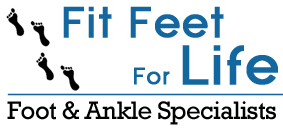2 Types of Flat Feet
If the bottom of your foot touches or almost hits the floor when you are standing, then you probably have flat feet. An easy way to tell is to wet your feet and then stand on a dry, flat surface and notice the results.
Having flat feet is a very common condition and over 60 million Americans have the disorder. Chronic and untreated flat feet can cause or contribute to lower back pain, knee joint problems, shin splints, hip problems, and other issues.
The two main types of flat feet are congenital and acquired:
Acquired flat feet
As you live your life, the large band of tissue that runs under the arch of your foot undergoes continuous pressure, and eventually, it simply can’t stay up anymore and falls. As it lowers, considerable pain is caused through the whole foot and ankle. Acquired flat feet may also be connected to tendon and ligament problems including plantar fasciitis.
Congenital flat feet
There are actually several types of flat feet in the congenital category, but the most common type is referred to as “flexible flat feet”. This means that you have a discernible arch but when you put weight on your foot the arch flattens. Another less common condition in this category is indicated by having no arch at all with or without weight is being placed on the foot.
Treatment options for flat feet
Quite a variety of treatment options are available for flat feet including resting, applying ice, stretching and flexing exercises, and taking Nsaids for pain. Custom orthotic inserts are often recommended. If your flat feet aren’t causing you any pain or other problems then you may not require any treatment.
It’s very important to see a foot doctor to find out exactly what type of flat feet you have and to make sure that you get the right treatment. At Fit Feet for Life, our team of board-certified podiatrists has access to advanced technologies and years of experience to help diagnose and treat a variety of foot and ankle problems, including heel pain, sports injuries, toe deformities, nail fungus, and plantar warts. Bonnie Sanchez, DPM, and Gregory Cook, DPM, provide high quality foot and ankle care to patients in the Tampa/St. Petersburg area at our five offices conveniently located in Sun City Center, Clearwater, St. Petersburg, and our two Tampa locations. Please contact us for more information or to schedule an appointment.

